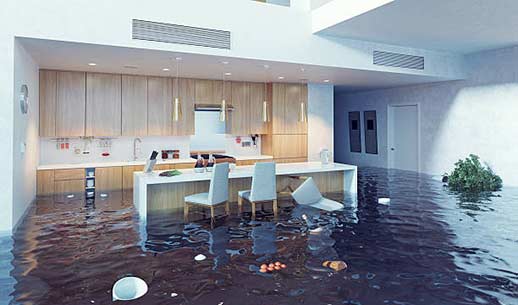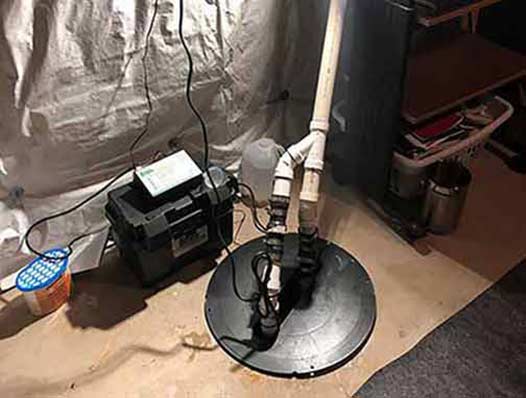
Safeguarding your home from natural disasters is of utmost importance, and one such calamity that can wreak havoc is a flood. Floods can cause extensive damage to your property and possessions, leading to financial and emotional distress. It is imperative to take proactive measures to protect your home and loved ones from this potential threat.
The Need for Flood Control Systems
Flood control systems are designed to prevent or minimize flood damage by effectively controlling the flow of water. These systems consist of various components that work together to divert excess water away from your home or property, mitigating the risk of flooding. Installing a reliable flood control system is crucial, and this comprehensive checklist will guide you through the process, ensuring you safeguard your home effectively.
Evaluate the Flood Risk
Before proceeding with the installation of a flood control system, it is essential to assess the flood risk specific to your area. Consider the following factors:
- Proximity to rivers, lakes, or other bodies of water.
- Previous history of flooding in the region.
- The elevation of your property relative to nearby water sources.
- Potential changes in rainfall patterns due to climate change.
Talk with professional plumbers or local authorities to determine the level of flood risk in your vicinity. This information will help you make informed decisions about the type of flood control system needed for your property.
Seek Professional Guidance
Installing a flood control system requires specialized knowledge and expertise. Consulting with professionals experienced in flood control systems is highly recommended. They can assess your property, provide personalized advice, and recommend suitable solutions based on your specific requirements. Their expertise will ensure the effectiveness and longevity of the flood control system.

Types of Flood Control Systems
There are various flood control systems available, each catering to different needs and flood risk levels. Some common types include:
1. Flood Barriers
Flood barriers are physical structures installed around your property to prevent floodwater from entering. These barriers can be in the form of walls or gates, and they are designed to withstand the force of incoming water. Flood barriers should be custom-designed to fit your property’s layout and should be constructed using durable and waterproof materials.
2. Floodgates and Check Valves
Floodgates and check valves are mechanisms installed in drainpipes or sewer lines to prevent floodwater from backing up into your property. These devices allow water to flow out but close automatically when water attempts to flow back in. This prevents sewage backup and contamination during flooding situations.
3. Sump Pump Systems
Sump pump systems are commonly used in basements or low-lying areas prone to flooding. A sump pump is installed in a pit or sump basin, and it detects water accumulation. Once the water level reaches a certain threshold, the pump activates and pumps the water away from your property to a designated drainage area.
4. Raised Foundation and Waterproofing
For properties located in flood-prone areas, constructing a raised foundation is a preventive measure to elevate the living space above potential flood levels. Additionally, waterproofing techniques can be employed to make the foundation and walls impermeable to water, reducing the risk of water seepage during floods.
Obtain Necessary Permits
Installing a flood control system often requires permits or approvals from local authorities. Ensure you acquire all the necessary permits and adhere to any regulations or guidelines for flood control systems in your area. Failure to comply with these requirements may result in penalties or the system’s inadequate performance.
Maintenance and Regular Inspections
Once your flood control system is installed, it is crucial to establish a regular maintenance routine. This involves periodic inspections and necessary repairs or replacements to ensure the system remains in optimal condition. Here are some maintenance tasks to consider:
- Clearing debris or obstructions from flood barriers or gates.
- Testing the functionality of check valves and sump pump systems.
- Ensuring proper drainage and flow away from your property.
- Inspecting and repairing any damage to the system caused by wear and tear or external factors.
Regular maintenance prevents system failures during critical situations and ensures prompt response to any potential issues that may arise.
Emergency Preparedness
Though a flood control system significantly reduces the risk of water damage, it is important to be prepared for emergencies. Develop an emergency plan that includes:
- Establishing evacuation routes and safe meeting points.
- Assembling an emergency kit with essential supplies and documents.
- Keeping emergency contact information readily available.
- Understanding the operation of your flood control system and having backup power sources if required.
- Staying updated with local weather forecasts and alerts.
In Summary
Protecting your home from floods requires meticulous planning, professional guidance, and the installation of a reliable flood control system. By following this checklist and taking proactive measures, you can minimize the risk of flood damage and safeguard your home and loved ones. Remember, prevention is always better than dealing with the aftermath of a devastating flood.

